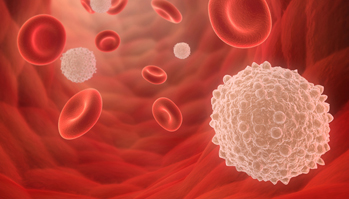HOW CAN WE HELP YOU? Call 1-800-TRY-CHOP
In This Section
Researcher Studies How Microbes Help to Eclipse Autoimmune Risk Factors

A JDRF Career Development Award will support Dr. Michael Silverman’s investigation of microbes’ protective effect against type 1 diabetes.
droseyb [at] email.chop.edu (By Barbara Drosey)title="Email Barbara Drosey"
The trillions of microbes that increasingly populate the human body from birth, collectively called the microbiome, provide an early training ground to educate our immune systems to fight infection. In addition to being an important offensive player, gut bacteria also may offer defensive tactics that signal to immune system cells to prevent disease.
This is the line of research Michael Silverman, MD, PhD, in the Division of Infectious Diseases at Children’s Hospital of Philadelphia, is pursuing with support from a prestigious JDRF. Dr. Silverman aims to investigate how certain human leukocyte antigen (HLA)-II molecules and the equivalent major histocompatibility complex (MHC)-II molecules in animals provide protection from autoimmune diseases such as type 1 diabetes (T1D).
“There’s evidence that exposure to certain microbes in humans may have a protective effect and decrease risk for developing T1D,” said Dr. Silverman, who is also on faculty in the Perelman School of Medicine at the University of Pennsylvania.
T1D is an autoimmune disease that causes the pancreas to produce little or no insulin. Without insulin, sugar builds up in the bloodstream, causing hyperglycemia, or high blood sugar. Currently, scientists do not know how to prevent the autoimmune process that attacks the insulin-producing beta cells or to prevent the onset of this form of diabetes that can appear suddenly in childhood or adulthood.
During his fellowship, Dr. Silverman developed a keen research interest in understanding the role of gut microbes in autoimmune diseases such as T1D. It turns out that HLA is the most important gene for determining an individual’s risk of developing autoimmune diabetes. While researchers have known for decades that, even with other risk factors, people with certain versions of the HLA gene almost never developed autoimmune diabetes, a scientific understanding of this phenomenon has yet to be illuminated.
His current five-year, JDRF-funded study, “Leveraging humoral immunity to promote commensal microbial protection from T1D,” will build on previous work with animal models that demonstrated a specific MHC-II molecule prevented T1D by selecting for diabetes-protective intestinal microbiota in the first weeks of life. The team will investigate how MHC-II and HLA-II molecules and commensal microbiota may work synergistically to prevent T1D.
While the microbiome has special places of residence in the body, most prominently in the intestine, Dr. Silverman and his lab team suggest that some microbes go out of bounds to “talk” to immune cells. His team will test their central hypothesis that specific microbes prevent T1D by promoting the development of diabetes-protective CD4+ regulatory T cells.
“We’re trying to identify which microbes could be talking to those T cells and which are the drivers of disease for T1D,” Dr. Silverman said. “We’re using antibodies to find the microbes communicating with the CD4+ cells, those regulatory T cells critical for preventing autoimmunity.”
With the assistance of the CHOP Flow Cytometry Core and the PennCHOP Microbiome Program, the research team can isolate bacteria and then identify the microbes that stimulate the CD4+ T cell compartment. Additionally, the team developed an innovative sequencing approach called mFLOW-SEQ (microbial flow cytometry and metagenomics sequencing), capable of identifying diabetes-protective microbes in MHC and HLA genetically protected individuals. Using mFLOW-SEQ, they identified a specific microbe, Akkermansia muciniphila, associated with protection from T1D in humans.
“We anticipate that our proposed study will identify microbes from human children that prevent type 1 diabetes,” Dr. Silverman noted in the JDRF abstract.
Once the study team identifies diabetes-preventive microbes, their next step is to test whether they can be given to individuals who are at risk for developing T1D to boost their protective immune response. Eighteen thousand youth in the United States were diagnosed with T1D each year in 2014 and 2015, according to the Centers for Disease Control and Prevention.